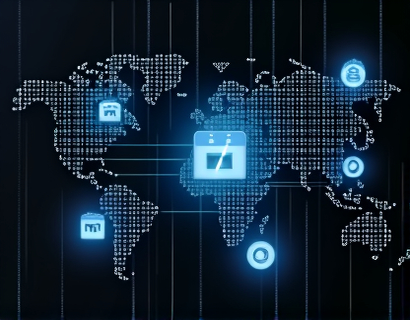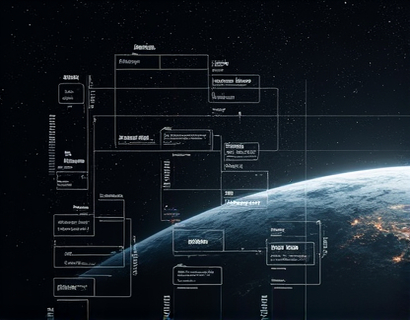Agricultural Software: Revolutionizing Farming Efficiency with Tailored Tech Solutions
In the rapidly evolving landscape of agriculture, the integration of advanced software solutions has emerged as a pivotal factor in enhancing farming efficiency and productivity. These technological advancements are not merely tools but transformative forces that are redefining the way agricultural operations are managed. By leveraging sophisticated software, farming professionals and industry experts can streamline processes, optimize resource utilization, and make informed strategic decisions, ultimately leading to significant growth and competitiveness in the market.
The Role of Agricultural Software in Modern Farming
Agricultural software encompasses a broad range of applications designed to address specific challenges faced by farmers and agricultural businesses. These solutions are tailored to meet the unique needs of the farming sector, from precision agriculture and crop management to supply chain optimization and financial planning. The primary goal of these software tools is to provide actionable insights and automate repetitive tasks, allowing farmers to focus on core activities that drive productivity and profitability.
Precision Agriculture: Enhancing Crop Yields and Resource Efficiency
Precision agriculture, also known as precision farming, is a key area where software solutions have made substantial impacts. By utilizing GPS, sensors, and data analytics, farmers can monitor and manage their fields with unprecedented accuracy. This technology enables real-time monitoring of soil conditions, moisture levels, and crop health, allowing for precise application of water, fertilizers, and pesticides. As a result, resource usage is optimized, leading to higher crop yields and reduced environmental impact.
For instance, variable rate technology (VRT) allows farmers to apply inputs such as seeds, fertilizers, and chemicals at varying rates across a field based on specific needs. This approach not only maximizes resource efficiency but also minimizes waste and cost. Software platforms that support VRT collect and analyze data from various sources, providing farmers with detailed maps and recommendations to optimize their operations.
Crop Management and Monitoring
Effective crop management is crucial for ensuring healthy and productive crops. Agricultural software solutions offer comprehensive tools for monitoring crop growth, detecting diseases, and predicting yields. Drones equipped with high-resolution cameras and multispectral sensors can capture detailed images of fields, which are then analyzed to identify issues such as pest infestations, nutrient deficiencies, and water stress. This early detection enables timely interventions, preventing potential losses and optimizing crop health.
Additionally, software platforms provide farmers with historical data and predictive analytics, helping them make informed decisions about planting schedules, irrigation, and harvesting. By integrating weather forecasts and climate data, these tools can further enhance decision-making, ensuring that farmers are well-prepared for any environmental challenges.
Supply Chain Optimization
The agricultural supply chain is complex and involves multiple stakeholders, from producers to consumers. Software solutions play a vital role in streamlining this process, reducing costs, and improving efficiency. Supply chain management software helps farmers and businesses manage inventory, track orders, and optimize logistics. By providing real-time visibility into the supply chain, these tools enable better coordination and communication among all parties involved.
For example, farm-to-table traceability systems ensure that products can be traced back to their origin, enhancing transparency and building consumer trust. These systems also help in managing recalls and ensuring compliance with regulatory standards. Furthermore, e-commerce platforms integrated with supply chain management software facilitate direct sales to consumers, reducing dependency on intermediaries and increasing profit margins.
Financial Management and Decision Support
Financial management is a critical aspect of running a successful agricultural business. Software solutions designed for financial planning and analysis provide farmers and agricultural businesses with the tools needed to manage their finances effectively. These platforms offer features such as budgeting, cost accounting, and cash flow management, helping users to make informed financial decisions.
Decision support systems (DSS) take this a step further by using advanced analytics and machine learning algorithms to provide insights and recommendations. For instance, DSS can analyze market trends, input costs, and historical data to suggest optimal pricing strategies, investment opportunities, and risk management tactics. This data-driven approach enables farmers and business owners to stay ahead of the curve and adapt to changing market conditions.
Sustainability and Environmental Impact
Sustainability is a growing concern in the agricultural sector, and software solutions are playing a significant role in promoting environmentally friendly practices. By optimizing resource usage and reducing waste, precision agriculture and other software tools contribute to sustainable farming. For example, precision irrigation systems ensure that water is used efficiently, minimizing runoff and conserving this vital resource. Similarly, software that optimizes fertilizer application helps prevent overuse, reducing the risk of soil degradation and water pollution.
Moreover, carbon footprint tracking and management software assist farmers in monitoring and reducing their environmental impact. These tools provide detailed reports on greenhouse gas emissions, helping businesses identify areas for improvement and implement sustainable practices. By adopting these technologies, agricultural operations can not only enhance their productivity but also contribute to global efforts to combat climate change.
Challenges and Considerations
While the benefits of agricultural software are undeniable, there are several challenges that need to be addressed to ensure successful implementation. One of the primary concerns is the initial cost of adopting these technologies. Small and medium-sized farms may find it difficult to invest in advanced software solutions, despite the long-term benefits. To overcome this barrier, governments and industry organizations can offer subsidies, grants, and financing options to make these technologies more accessible.
Another challenge is the need for technical expertise to effectively use and maintain these systems. Farmers and agricultural businesses must invest in training and development to ensure their staff can fully leverage the capabilities of the software. Additionally, data security and privacy are critical considerations, as sensitive information is often handled through these platforms. Robust security measures and compliance with data protection regulations are essential to build trust and protect user data.
Future Trends in Agricultural Software
The future of agricultural software is promising, with several emerging trends poised to further revolutionize the industry. One such trend is the integration of artificial intelligence (AI) and machine learning (ML) to enhance predictive analytics and automation. AI-powered systems can analyze vast amounts of data to identify patterns and make predictions with high accuracy, enabling more proactive and precise decision-making.
Another exciting development is the use of Internet of Things (IoT) devices in agriculture. IoT sensors can be deployed across fields and farms to collect real-time data on various parameters such as soil moisture, temperature, and humidity. This data, when combined with cloud computing and analytics, provides a comprehensive view of farm operations, enabling more efficient and data-driven management.
Furthermore, the rise of blockchain technology offers new possibilities for traceability and transparency in the agricultural supply chain. Blockchain can ensure that every step of the production and distribution process is recorded and verified, enhancing trust and accountability among stakeholders.
Conclusion
The integration of advanced software solutions in agriculture is transforming the industry, offering unprecedented opportunities for efficiency, productivity, and sustainability. By embracing these technologies, farming professionals and businesses can streamline their operations, make informed decisions, and stay competitive in a rapidly changing market. As the agricultural sector continues to evolve, the role of software will become increasingly crucial, driving innovation and growth for years to come.










































